The Haswell Review: Intel Core i7-4770K & i5-4670K Tested
by Anand Lal Shimpi on June 1, 2013 10:00 AM ESTCPU Performance: Five Generations of Intel CPUs Compared
For the purposes of our look at Haswell, we will be breaking up our review coverage into two parts. The rest of this article will focus on the CPU side of Haswell, while coverage of the GPU - including Iris Pro and Crystalwell - has been spun off into another artice: Intel Iris Pro 5200 Graphics Review: Core i7-4950HQ Tested.
The majority of the market doesn’t upgrade annually, so I went back a total of five generations to characterize Haswell’s CPU performance. Everything from a 2.53GHz Core 2 Duo through Nehalem, Sandy Bridge, Ivy Bridge and Haswell are represented here. With the exception of the Core 2 platform, everything else is running at or near the peak launch frequency for the chip.
In general, I saw performance gains over Ivy Bridge of 1 - 19%, with an average improvement of 8.3%. Some of the performance gains were actually quite impressive. The 7.8% increase in Kraken shows there’s still room for improvement in lightly threaded performance, while the double digit FP performance gains in POV-Ray and x264 HD really play to Haswell’s strengths.
Compared to Sandy Bridge, Haswell looks even more impressive. The Core i7-4770K outperforms the i7-2700K by 7 - 26%, with an average performance advantage of 17%. The gains over Sandy Bridge aren’t large enough to make upgrading from a Sandy Bridge i7 to a Haswell i5 worthwhile though, as you still give up a lot if you go from 8 to 4 threads on a quad-core part running heavily threaded workloads.
Compared to Nehalem the gains average almost 44%.
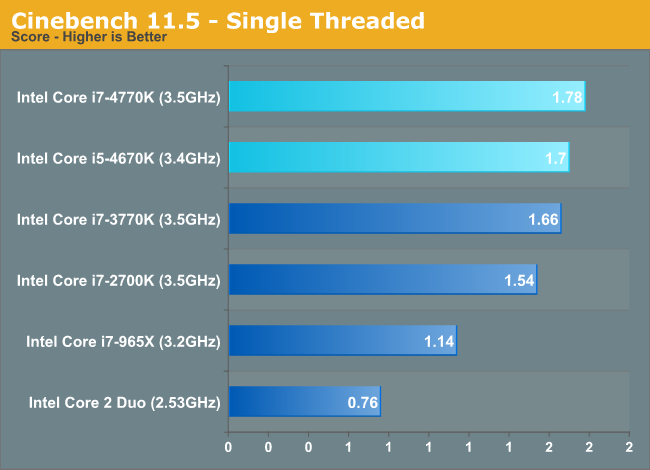


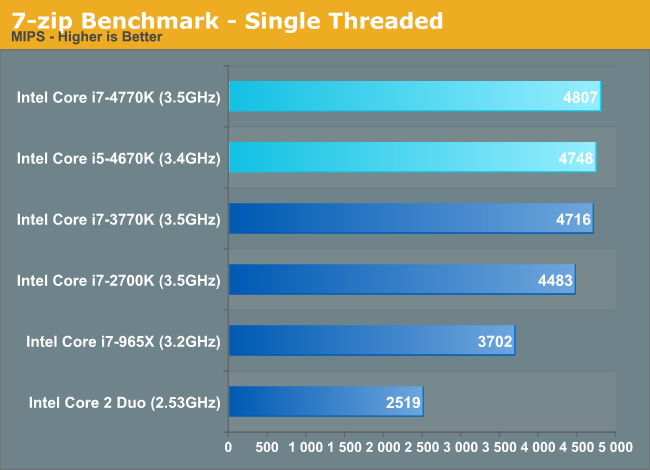
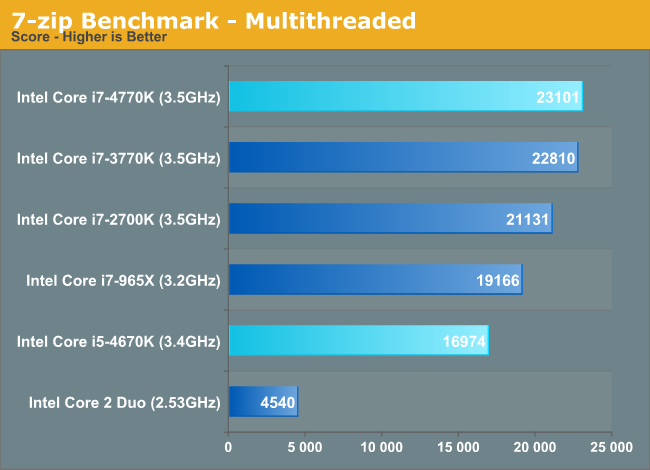
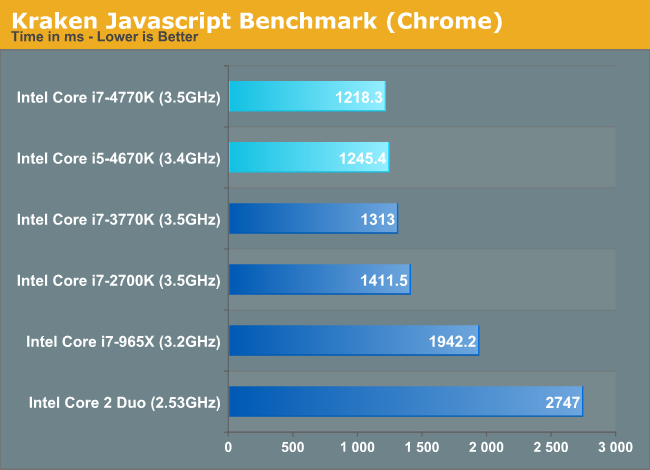
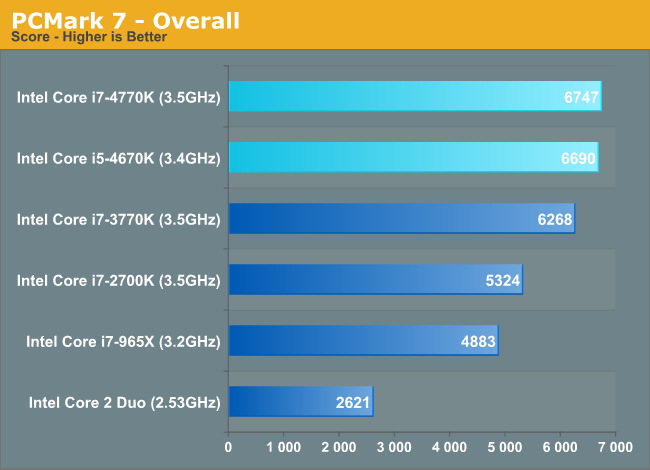
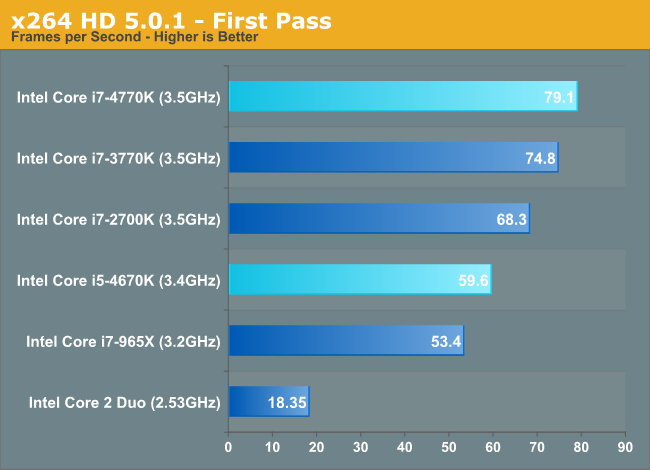
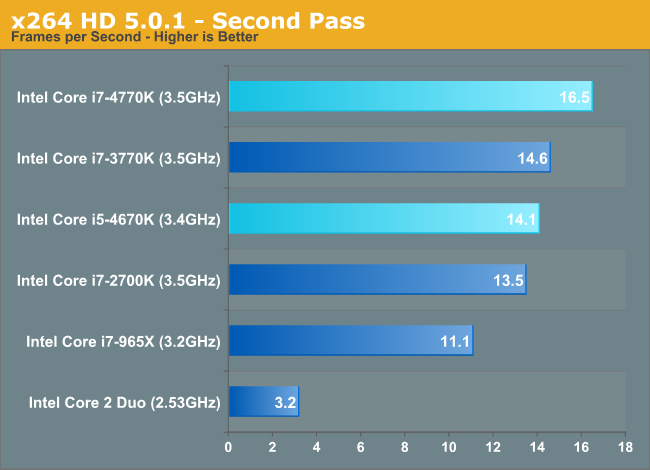
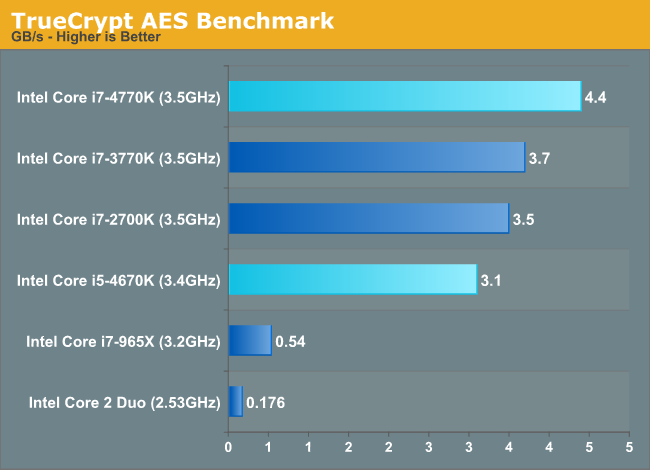

Quite possibly the most surprising was just how consistent (and large) the performance improvements were in our Visual Studio 2012 compile test. With a 15% increase in performance vs. Ivy Bridge at the same frequencies, what we’re looking at here is the perfect example of Haswell’s IPC increases manifesting in a real-world benchmark.
Gaming Performance
After spending far too much time on the Iris Pro test system, I didn’t have a ton of time left over to do a lot of gaming performance testing with Haswell. Luckily Ian had his gaming performance test data already in the engine, so I borrowed a couple of graphs.
As expected, Haswell is incrementally quicker in GPU bound gaming scenarios compared to Ivy Bridge - and most definitely at the top of the charts.
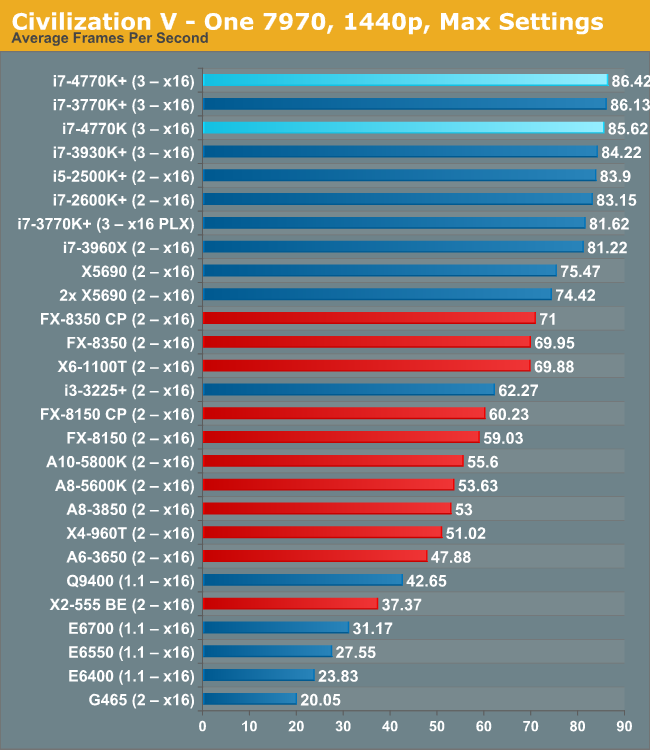











210 Comments
View All Comments
bji - Monday, June 3, 2013 - link
+10 false dichotomy. Look it up.kenjiwing - Saturday, June 1, 2013 - link
Any reviews comparing this gen to a 980x??Ryan Smith - Saturday, June 1, 2013 - link
It's available in Bench.http://www.anandtech.com/bench/Product/836?vs=142
owikh84 - Saturday, June 1, 2013 - link
4560K??? Not 4770K & 4670K?karasaj - Saturday, June 1, 2013 - link
4670K is the Haswell equivalent of a 3570K.hellcats - Saturday, June 1, 2013 - link
I read with some concern that the TSX instructions aren't going to be available on all SKUs. This is the main thing that I've been looking forward to on Haswell! Not providing the capability across the family is reminiscent of the 486SX/DX debacle. TSX could be huge for game physics as it would allow for far more consistent scaling. I know it is supposed to be backwards compatible, but what's the point of coding to it if it isn't always there?zanon - Saturday, June 1, 2013 - link
Agreed, TSX is one of the most interesting parts of Haswell so I'm sorry not to see it get more discussion. And as you say (and like with VT-d or other tech) I think Intel is being stupid and self-defeating by trying to make it an artificial differentiator. Unlike general basics of a chip such as clock rate, cache, hyperthreading or raw execution resources these sorts of features are only as valuable as the software that's coded for them, and nothing kills adoption amongst developers like "well maybe it'll be there but maybe not." If they can't depend on it, then it's not worth spending much extra time with and tremendously limits what it can be used for. That principal shows up over and over, it's why consoles can typically hold their own for so long. Even though on paper they get creamed, in reality developers are actually able to aim for 100% usage of all resources because there will never be any question about what is available.For features like this Intel should aim for as broad adoption as possible, or what's the point? They can differentiate just fine with pure performance, power, and physical properties. Disappointing as always.
penguin42 - Saturday, June 1, 2013 - link
Agreed! I'd also be interested in seeing performance comparisons with a transactionally optimised piece of code.Johnmcl7 - Saturday, June 1, 2013 - link
Definitely, I was a bit puzzled reading the review to find barely a mention of TSX when I thought it was meant to be one of the ground breaking new features on Haswell. Even if there was only a synthetic benchmark for now it would be extremely interesting to see if it works anything like as well as promised.John
bji - Sunday, June 2, 2013 - link
TSX is so esoteric in its applicability that I think you'd be very hard pressed to a) find a benchmark that could actually exercise it in a meaningful way and b) have any expectation that this benchmark would translate into any actual perceived performance gain in any application run by 99.999% of users.In other words - TSX is only going to help performance in some very rare and obscure types of software that "normal" users will never even come close to using, let alone caring about the performance of.
However I am intruiged by your speculation that TSX will be beneficial for physics simulation, which I guess could translate to perceivable performance increases for software that end users might actually use in the form of game physics. I found a paper that described techniques for using transactional memory to improve performance for physics simulation but it only found a 27% performance increase, which is not exactly earth shattering (I wouldn't call it "huge for game physics" personally).